 |
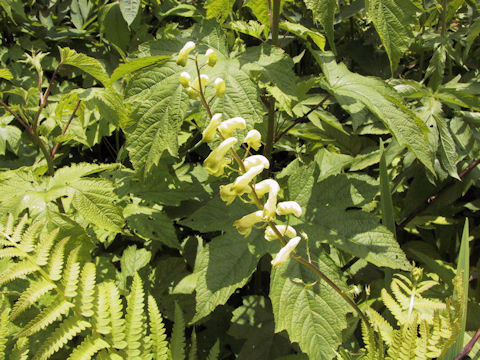

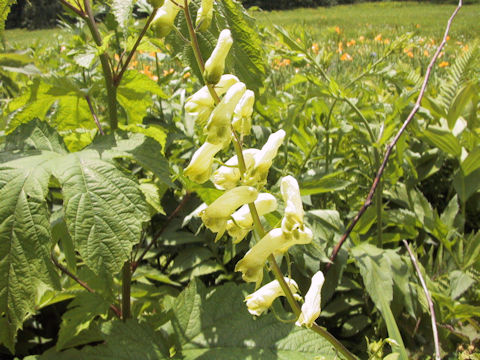

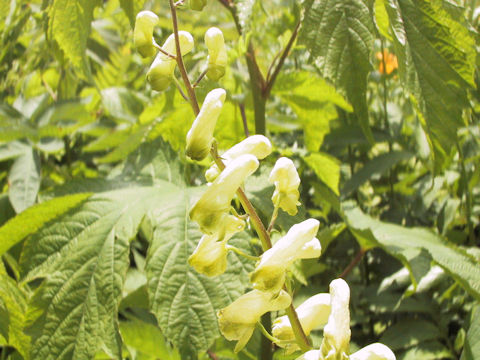

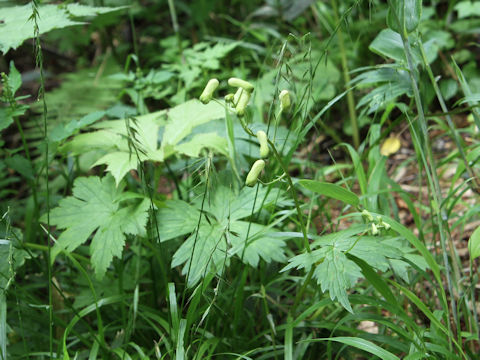

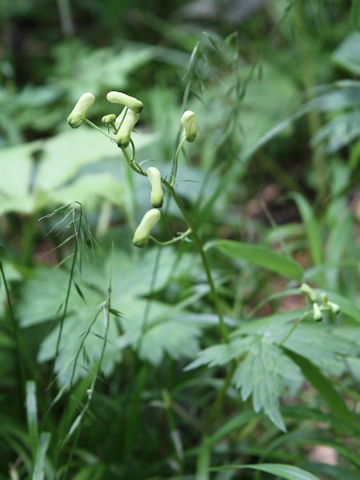

|

|
わが国の本州、中部地方以北から北海道に分布しています。山地帯から高山帯の湿り気のある草地に生え、高さは50〜100センチになります。根生葉は大きく、掌状に7〜9裂します。7月から8月ごろ、総状花序をだし、淡黄色の筒状花を咲かせます。和名は、花のかたちが伶人(雅楽の奏者)のかぶる冠に似ていることから。
|

|
キンポウゲ科トリカブト属の多年草で、学名は Aconitum gigas var. hondoense。英名はありません。
|

|
The "Oo-reijin-so" (Aconitum gigas var. hondoense) belongs to Ranunculaceae (the Buttercup family). It is a perennial herb that is distributed from Chubu district of Honshu north to Hokkaido. This herb grows in montane to alpine wet grasslands and can reach 50-100 cm in height. The basal leaves are large and divided into 7-9 lobes palmately. The racemes are borne and bloom pale yellow tubular flowers from July to August. The Japanese name is derived from the flower shaped like a "Reijin's headwear" (Reisjin is a prayer of Gagaku; Japanese classical music).
|

|
[上・中1〜2] 長野県木島平村「北ドブ湿原」にて、2003年07月20日撮影。
[中3・下] 群馬県片品村戸倉「川上川」にて、2015年07月05日撮影。
|






